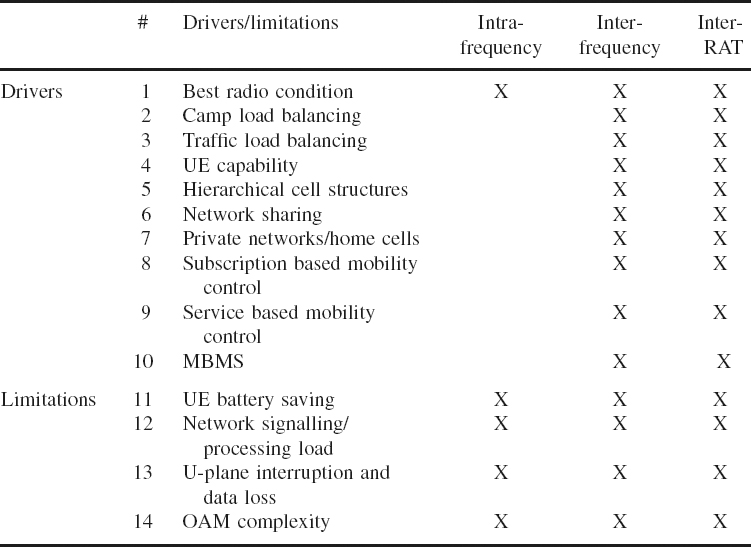Drivers and Limitations for Mobility Control
Table 13.1 the driver and limitations for handover decisions, in addition to their applicability for different mobility scenarios. Drivers form the operational basis upon which a handover decisions should be made, while limitations indicate to aspects that may constrain the selection of the handover type or scenario. For LTE, 3GPP distinguishes between three types of mobility scenarios. The first, intra-frequency, is the fundamental handover scenario and is strictly driven by “best radio condition” driver—no other driver can result in an intra-frequency handover as it will definitely result in a degrading performance. Inter-frequency, on the other hand, becomes possible when an operator has simultaneous access to multiple carriers or bands for LTE. This accessibility can be either fixed or temporary. The resulting flexibility allows for different decisions in resource control and architecture, that is, dedicate certain bands for certain services, or establish a network hierarchy. Similarly, the various drivers and limitations can be applied if the operator (or user) has access to multiple RATs.
Table 13.1 LTE handover drivers and limitations, and applicability to mobility scenarios. Reproduced by permission of © 2010 3GPP. Further use is strictly prohibited

As aforementioned, the “best radio condition” driver supersedes any other driver ...
Get LTE, LTE-Advanced and WiMAX: Towards IMT-Advanced Networks now with the O’Reilly learning platform.
O’Reilly members experience books, live events, courses curated by job role, and more from O’Reilly and nearly 200 top publishers.

